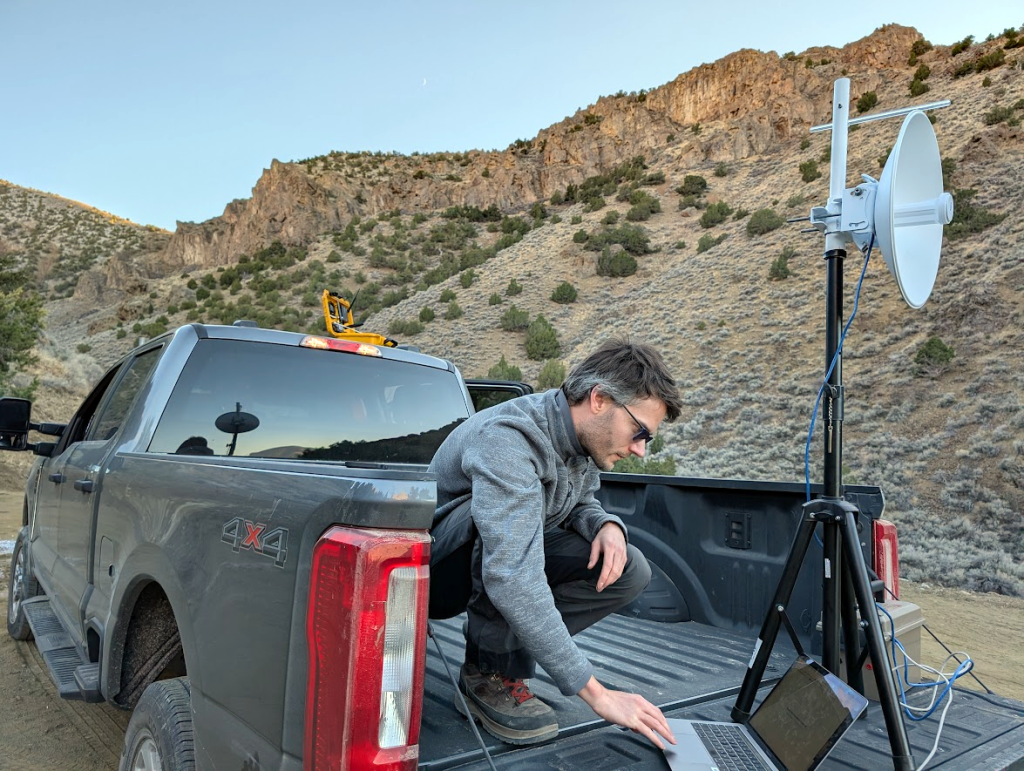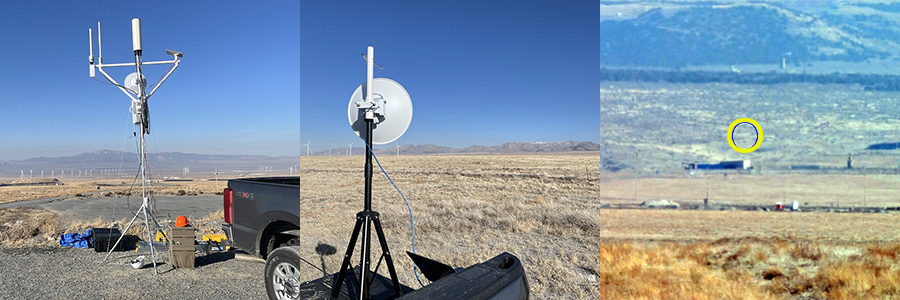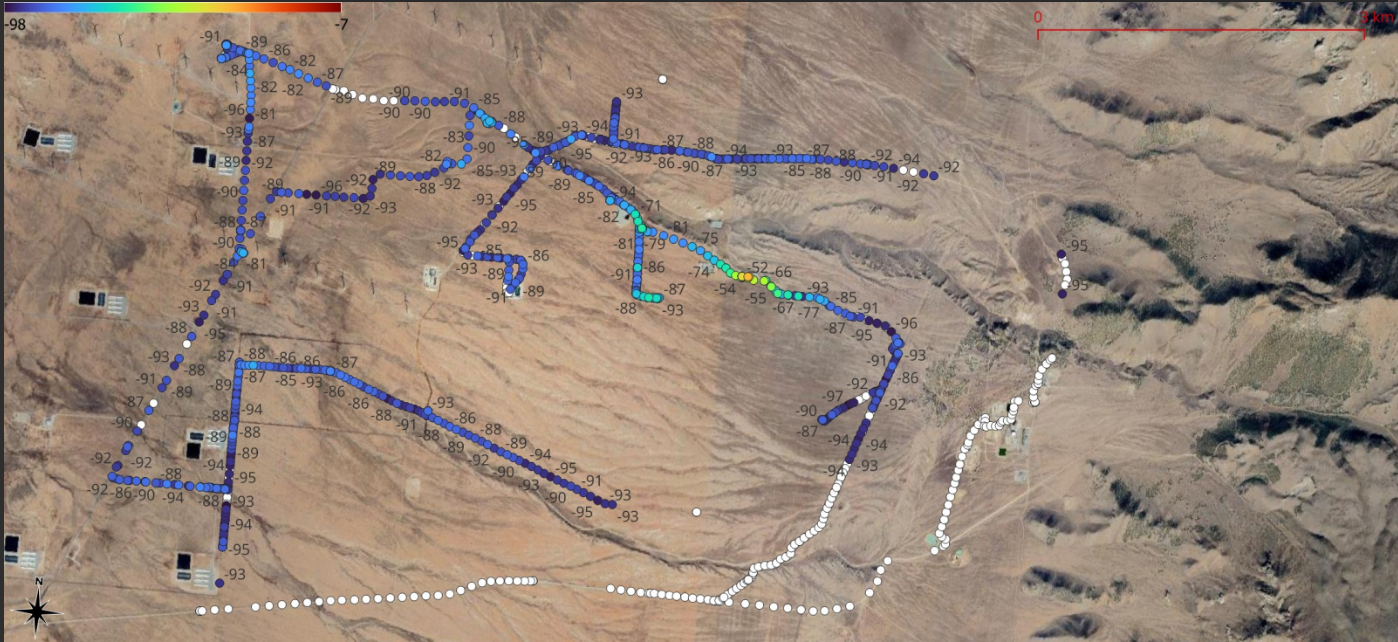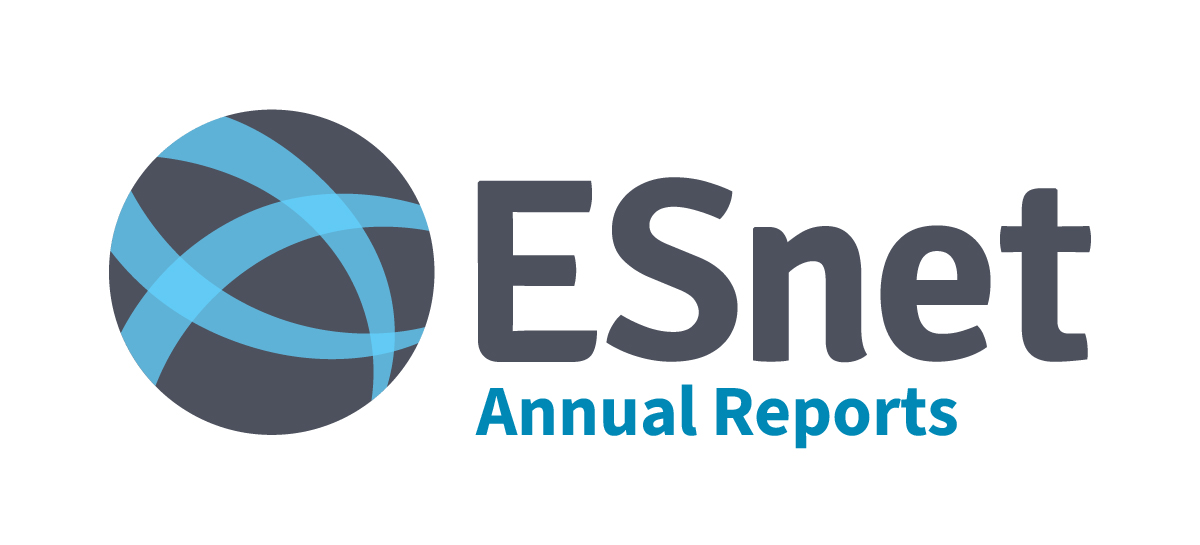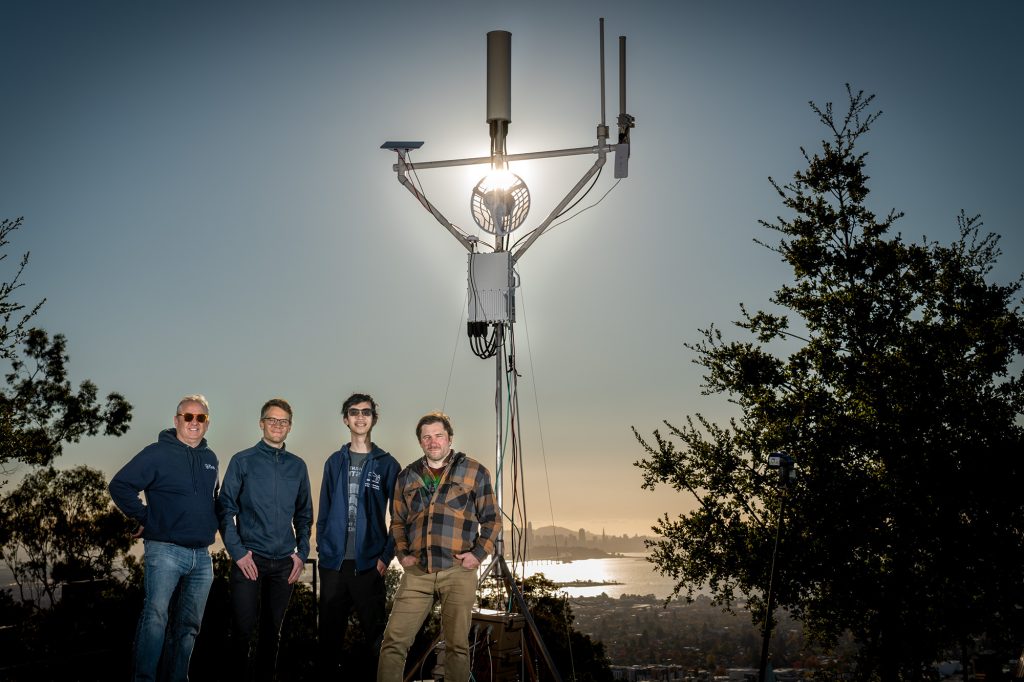
Greenfield Wireless Prototype Connects Field Researchers to High-Speed Networks
ANDREW WIEDLEA (ESNET), STIJN WIELANDT (EARTH AND ENVIRONMENTAL SCIENCES AREA), HOWARD YAO (EESA), AND JAMES KAFADER (ESNET) WITH THE GREENFIELD WIRELESS EDGE PROTOTYPE AT BERKELEY LAB IN NOVEMBER 2024.
Many emerging DOE science programs — from geothermal energy research to power-grid testbeds — take place in remote “greenfield” locations where traditional fiber connectivity is unavailable or impractical. These sites often rely on mobile sensors, drones, and IoT devices, but lack the robust data links needed to support real-time analysis and access to computing resources.
To bridge this gap, ESnet launched the Greenfield Wireless Edge Site Characterization project, in partnership with staff from Berkeley Lab’s Earth and Environmental Sciences Area. The portable, self-powered wireless tower they developed integrates multiple communication technologies to evaluate and deliver reliable connectivity from the field. Standing 13 feet and weighing about 200 pounds, the modular system supports private cellular (4G CBRS), Wi-Fi HaLow, standard Wi-Fi, satellite broadband, and directional radio links, operating continuously via solar power.
In 2024, ESnet’s Greenfield Wireless team deployed the Wireless Test Tower at Berkeley Lab for initial trials, achieving private cellular transmission up to 3.5 miles. They then took on field tests at AmeriFlux soil-emissions sites in California and geothermal research sites in Utah and Nevada — and confirmed the system’s ability to identify optimal wireless solutions for each environment.
By lowering data retrieval costs, enabling real-time processing of large datasets, and integrating with ESnet’s fiber backbone or partner networks, the Greenfield Wireless prototype opens new possibilities for remote science. The team’s ultimate goal is to document and openly share this blueprint, enabling other research institutions and national labs to replicate and deploy similar systems, with ESnet providing support and expertise.
